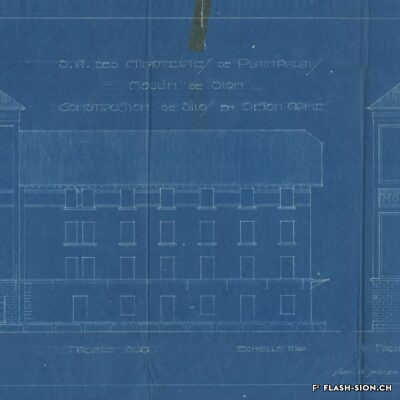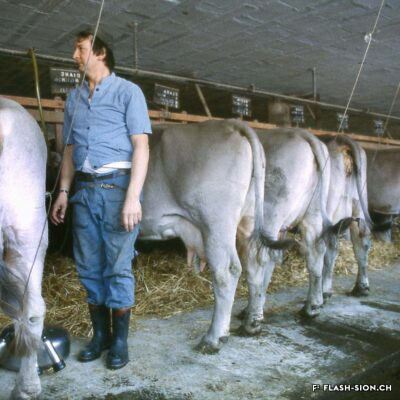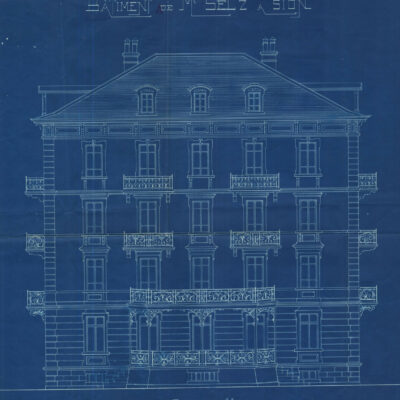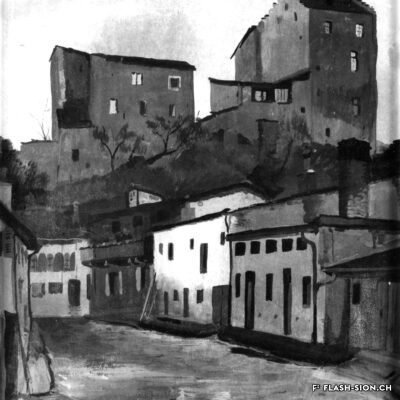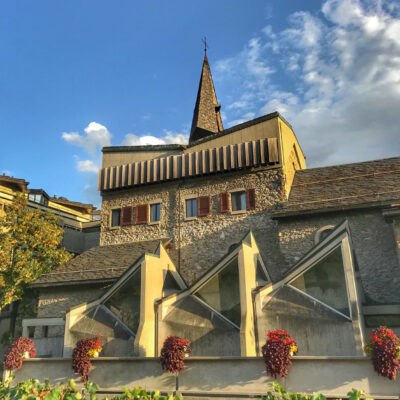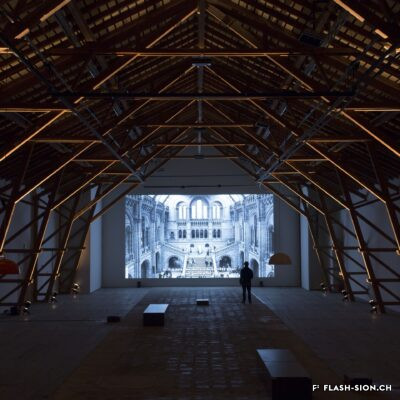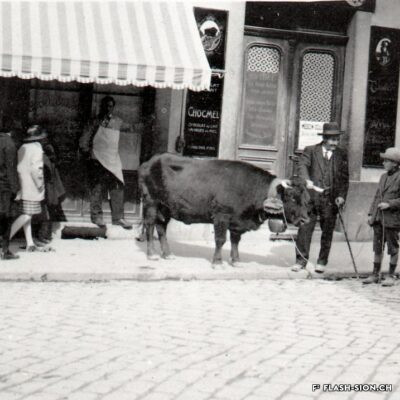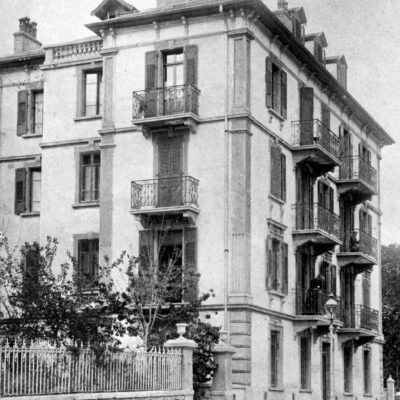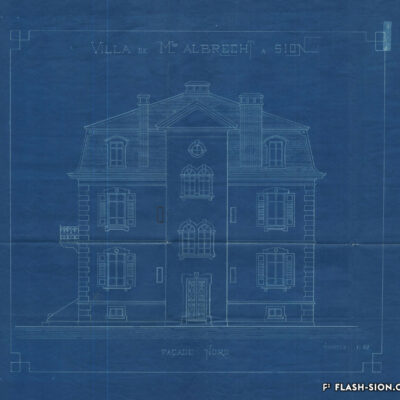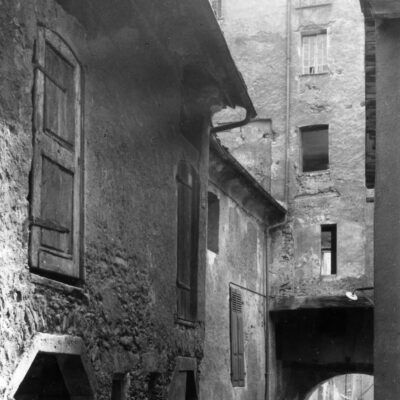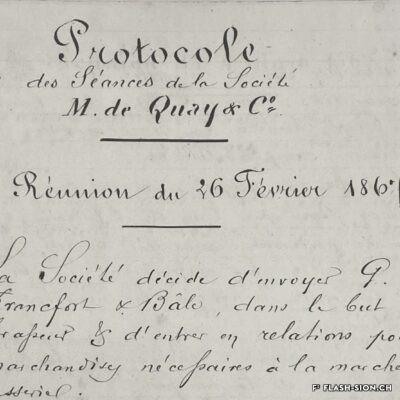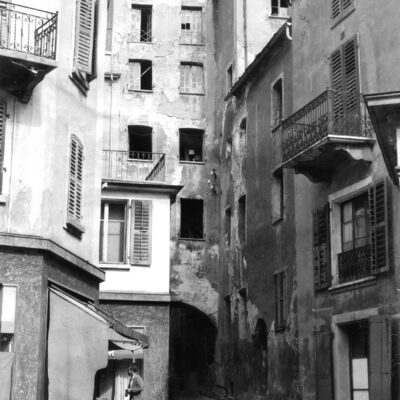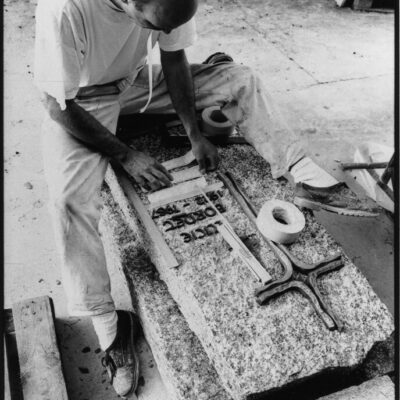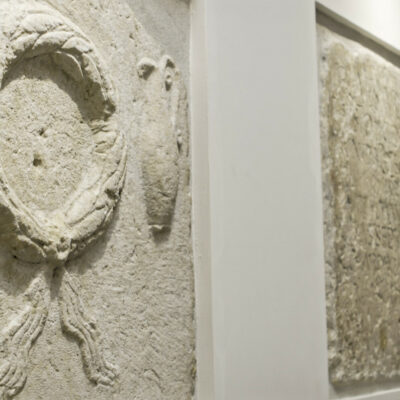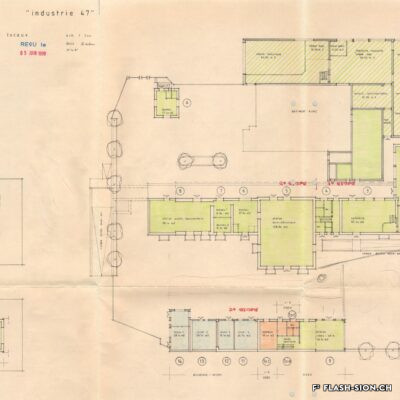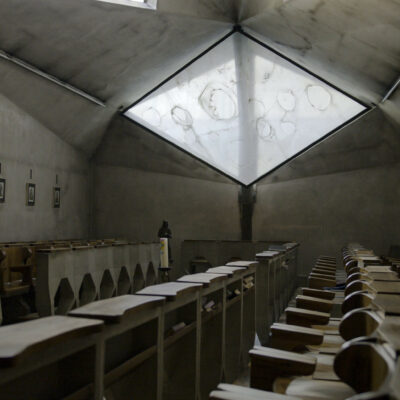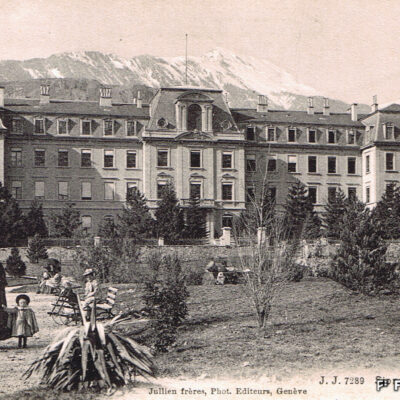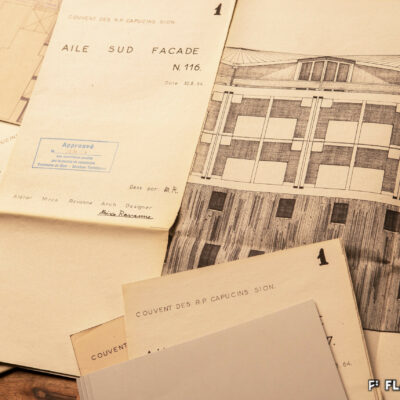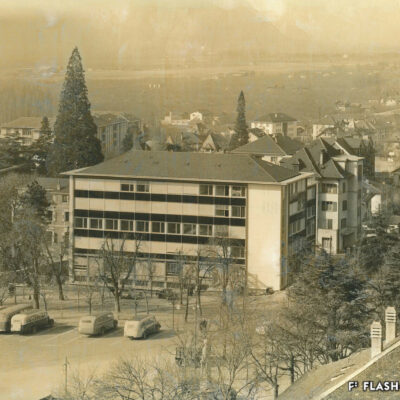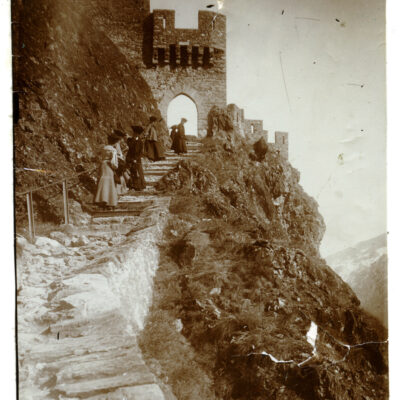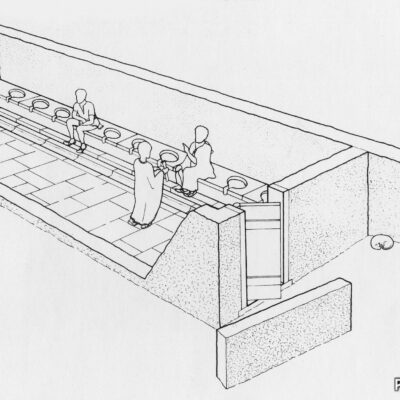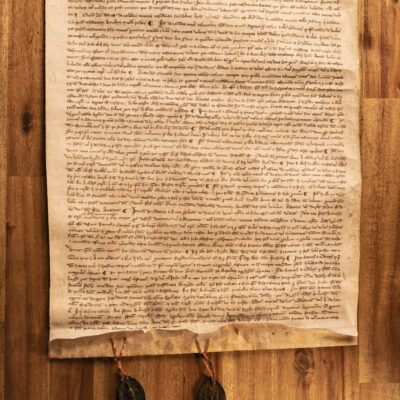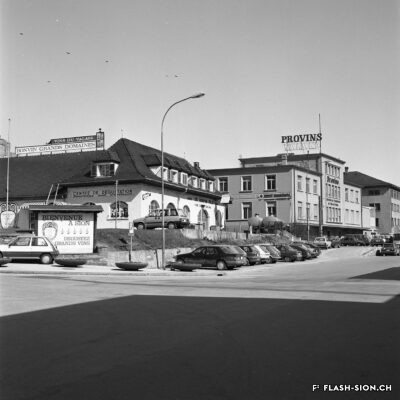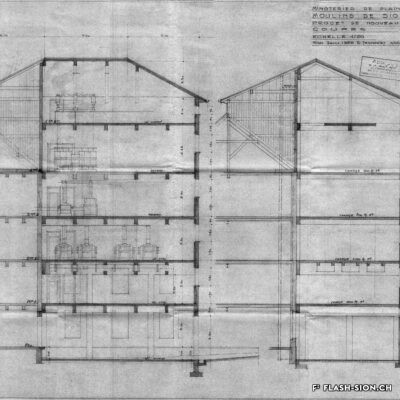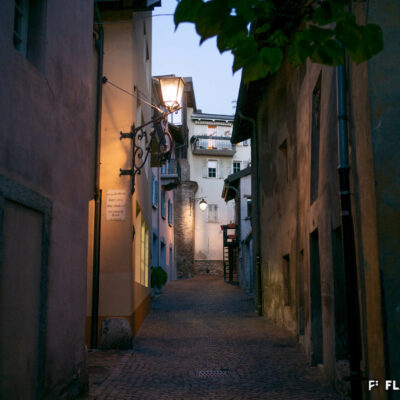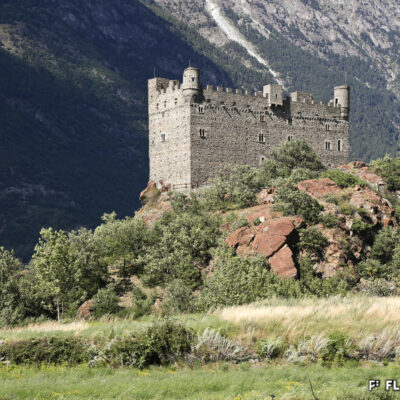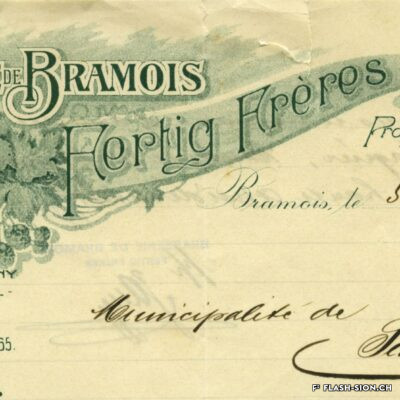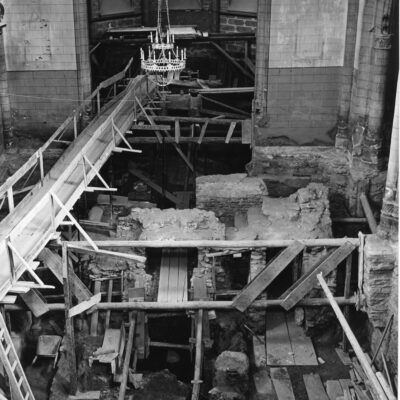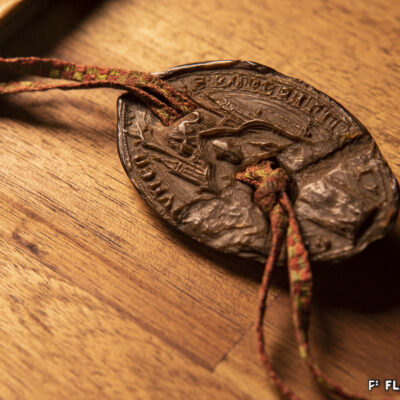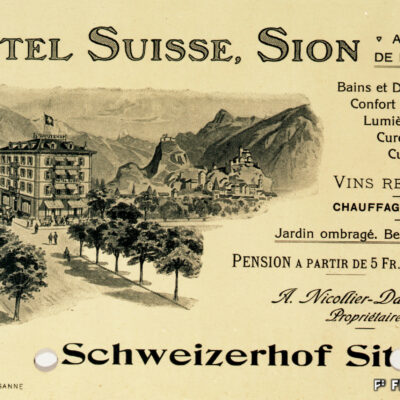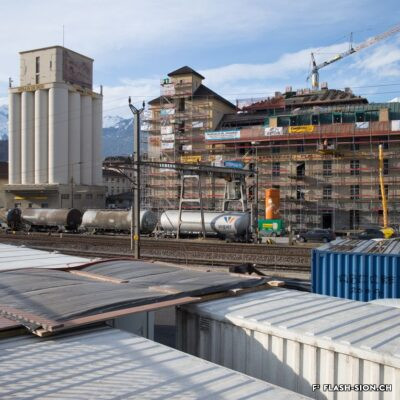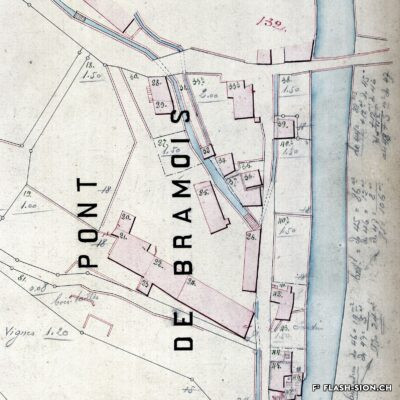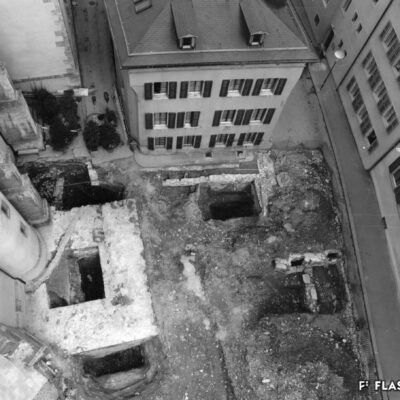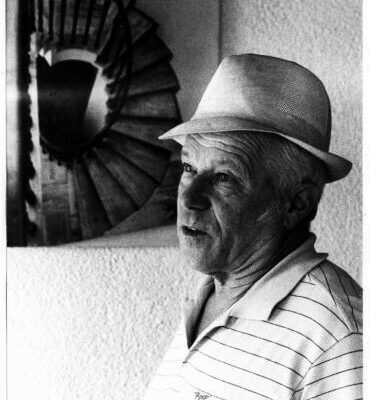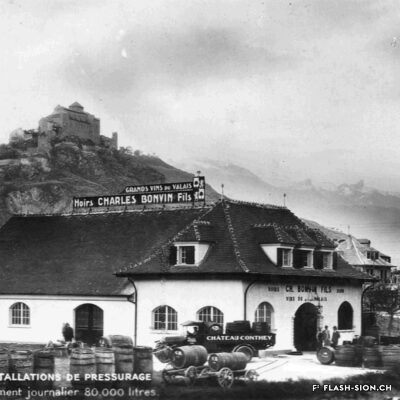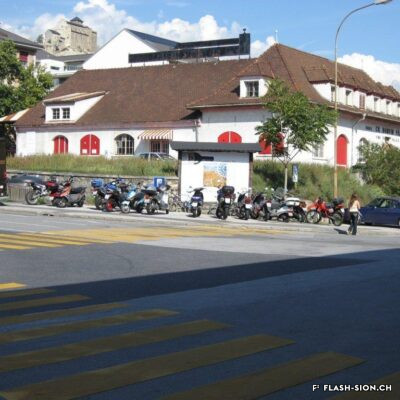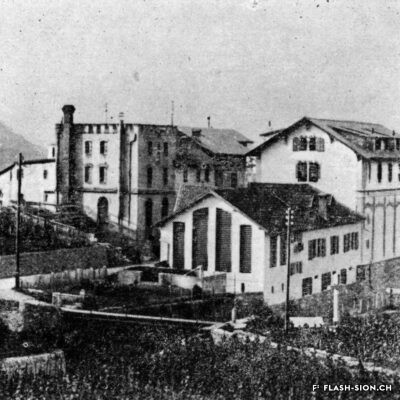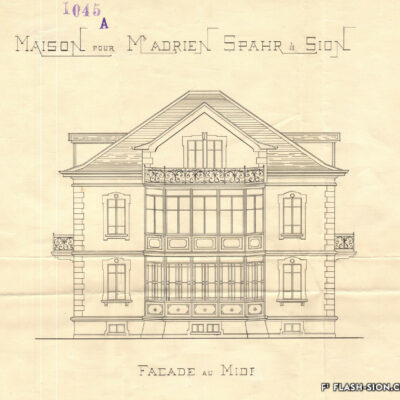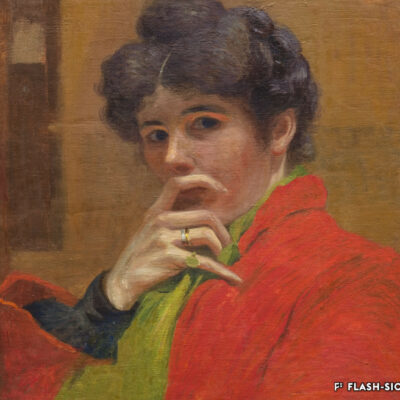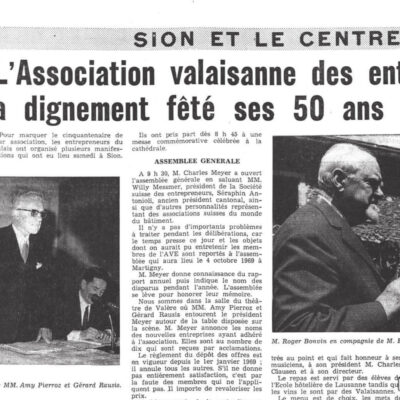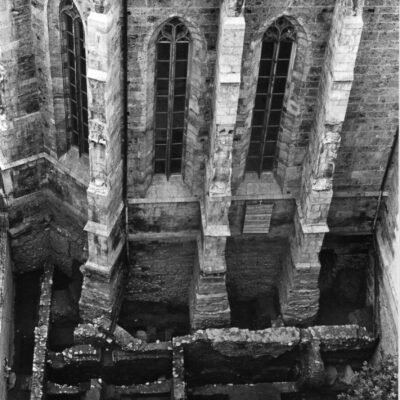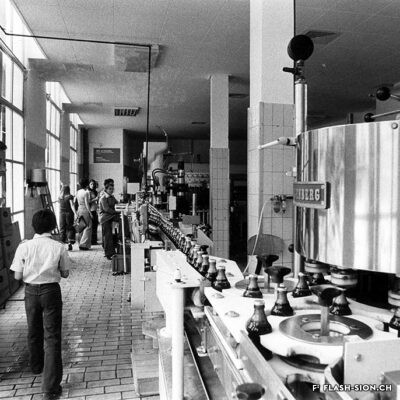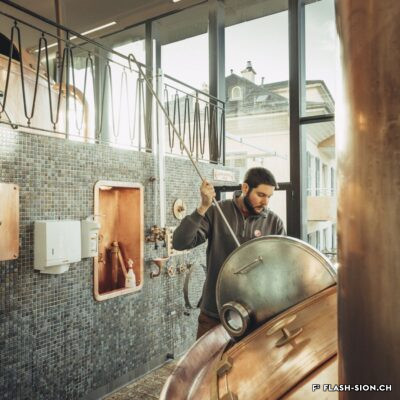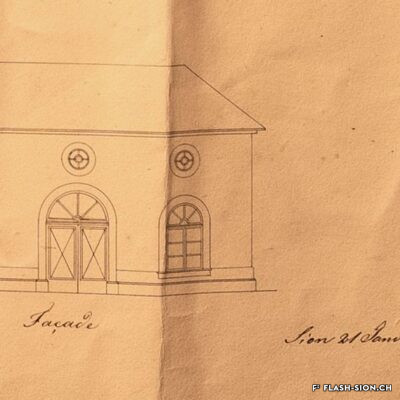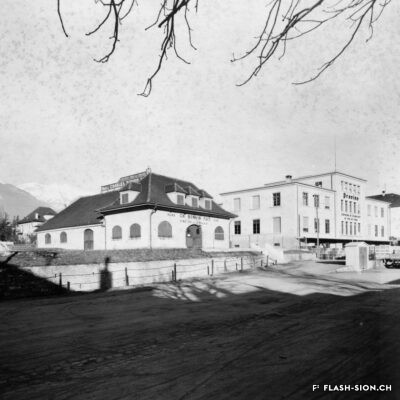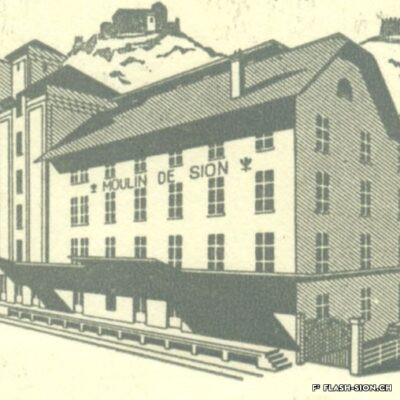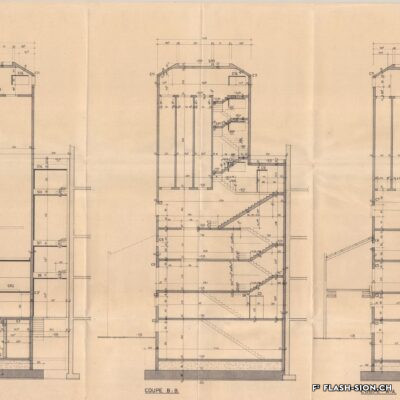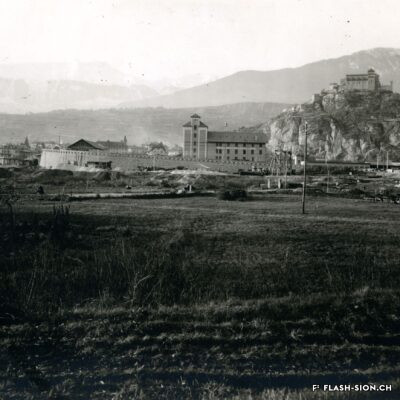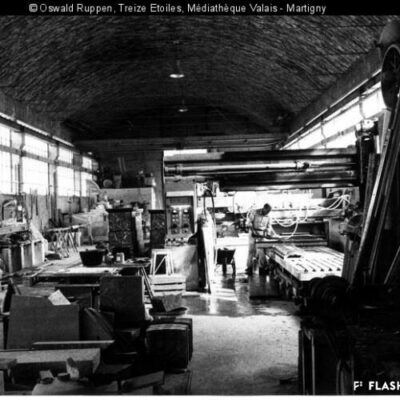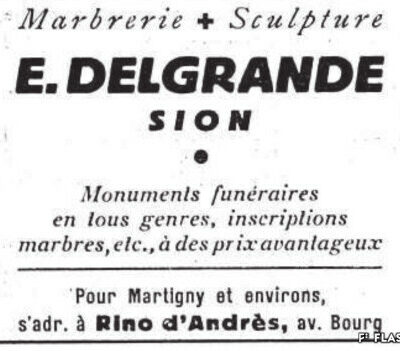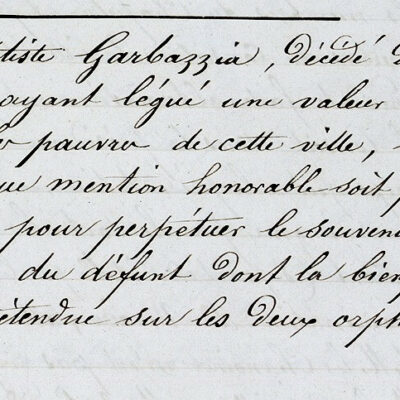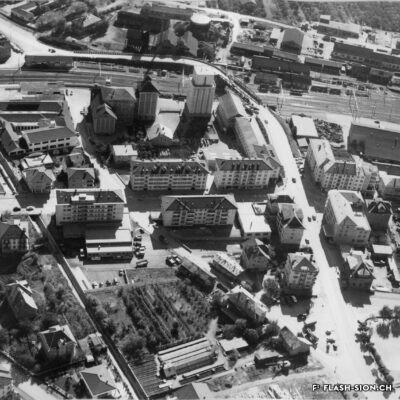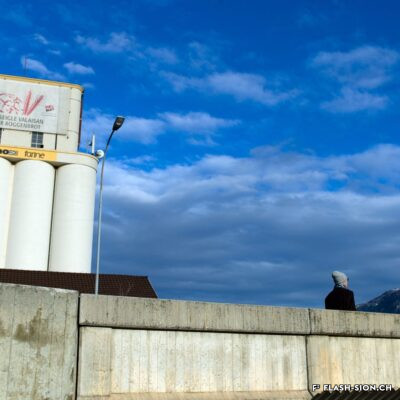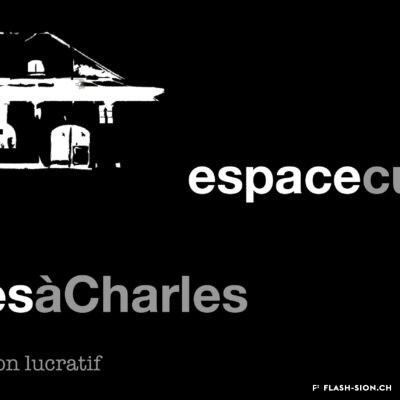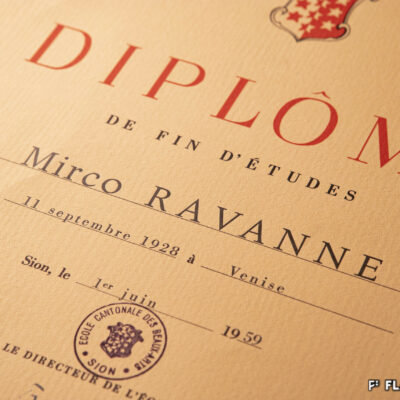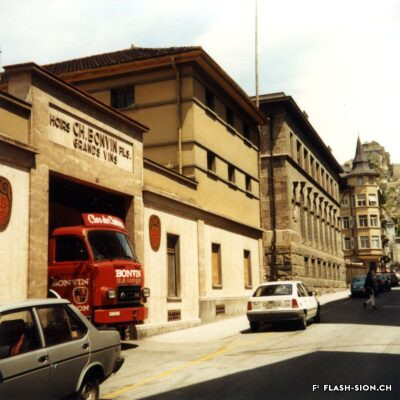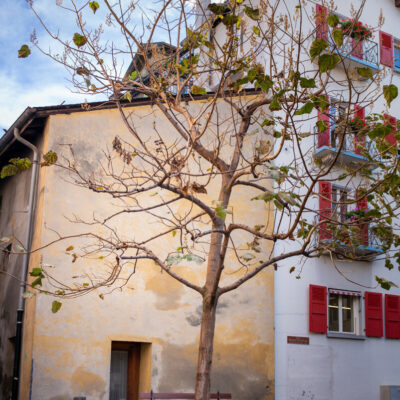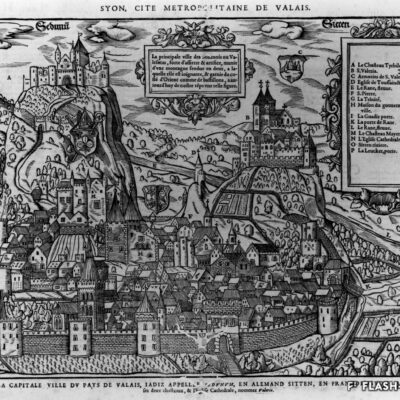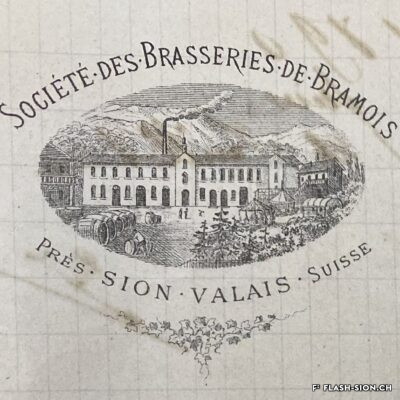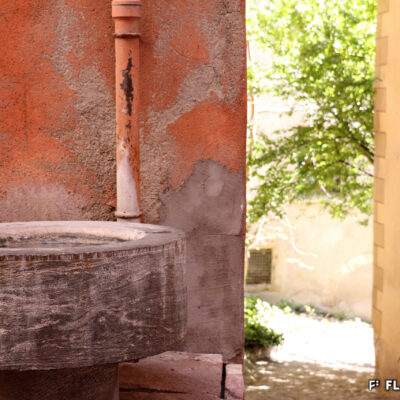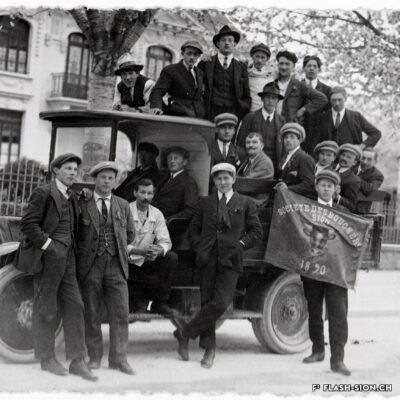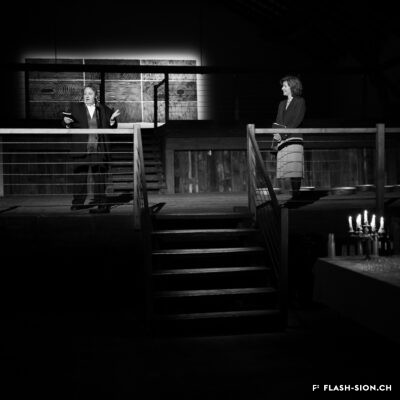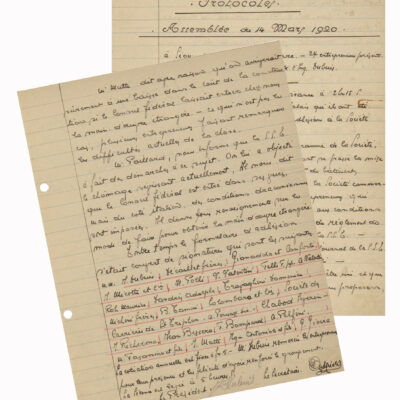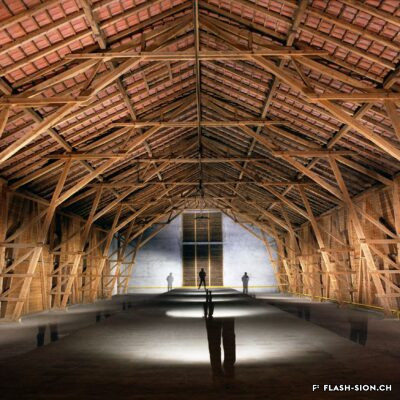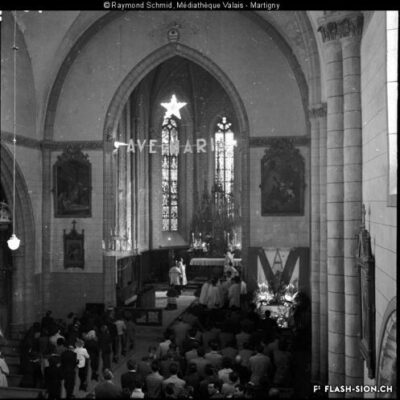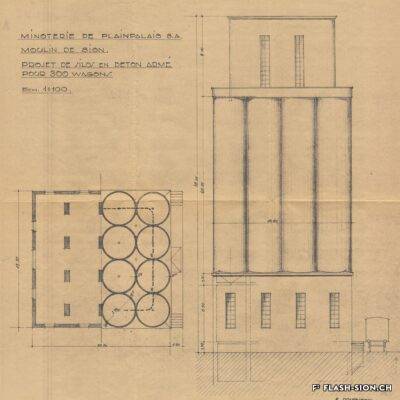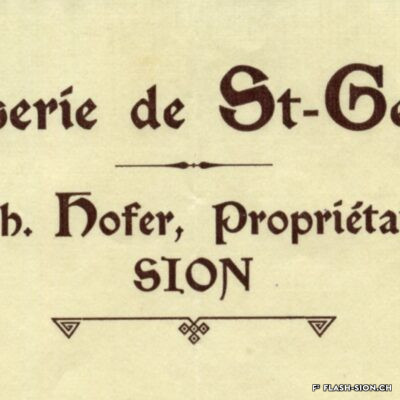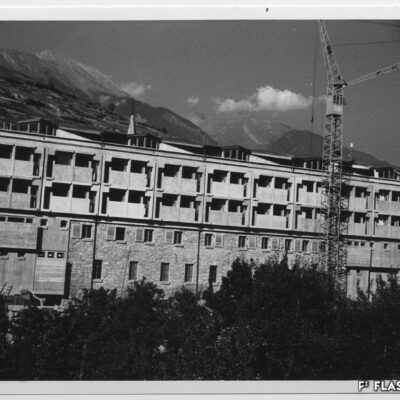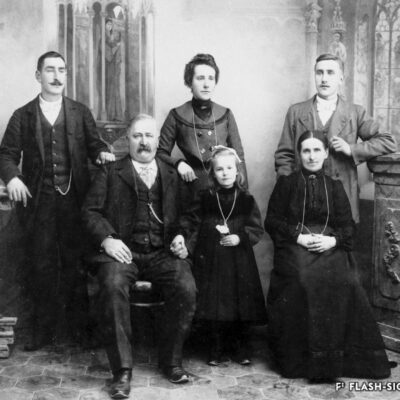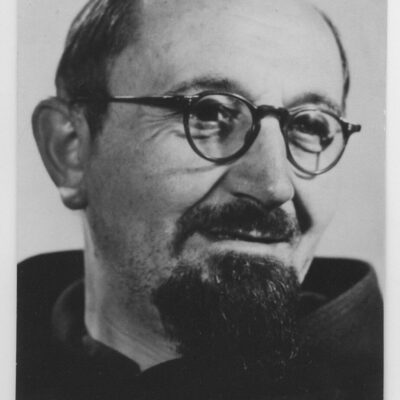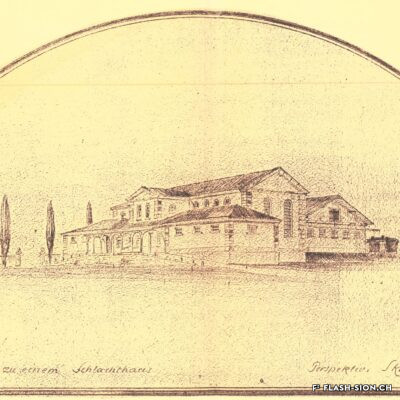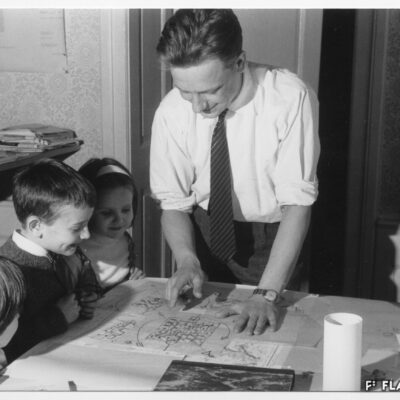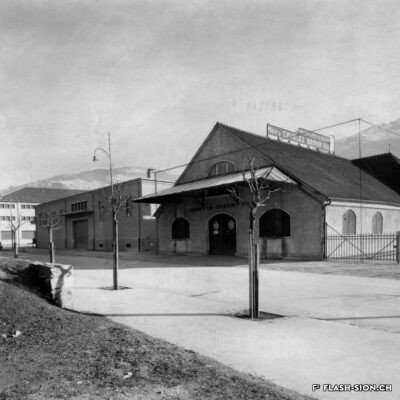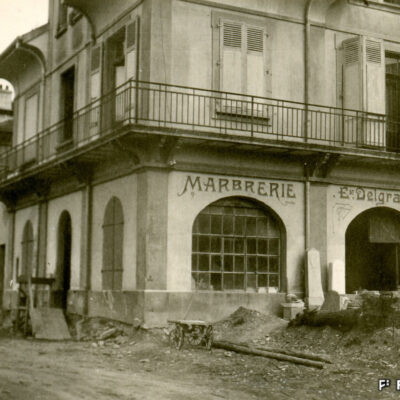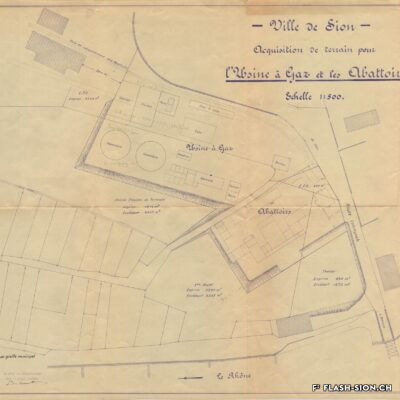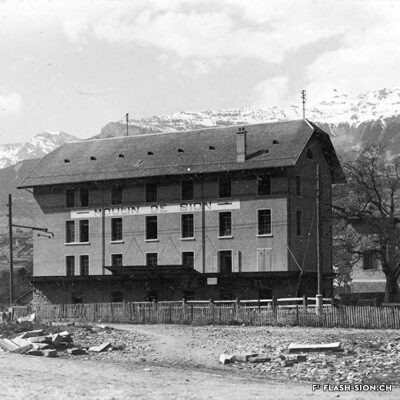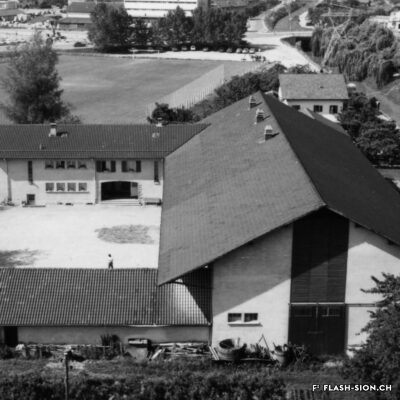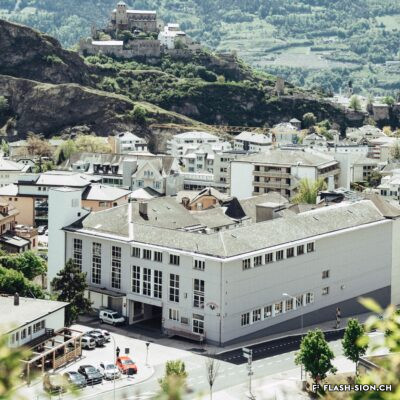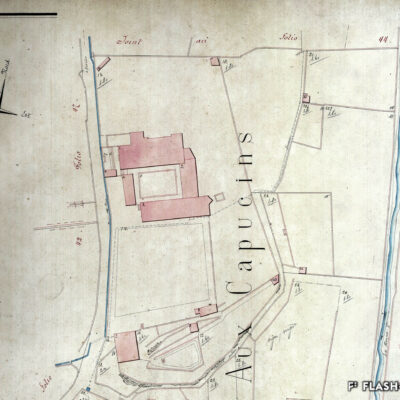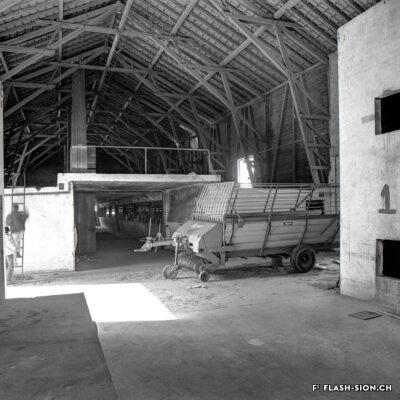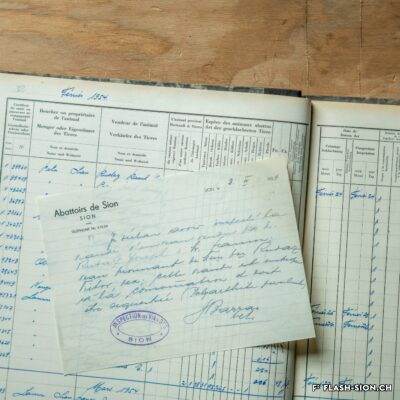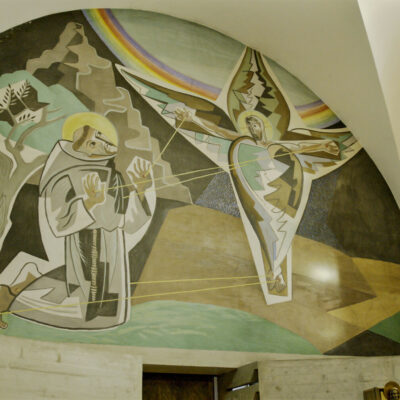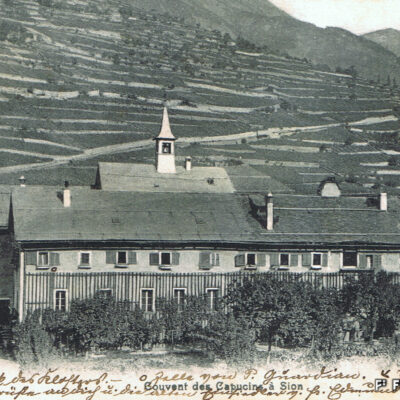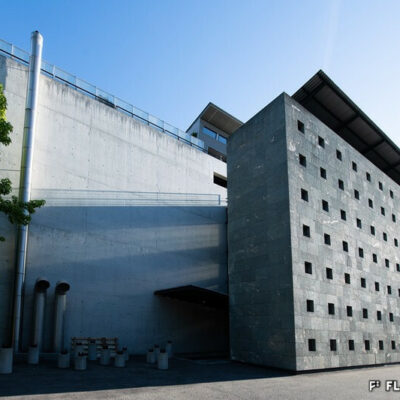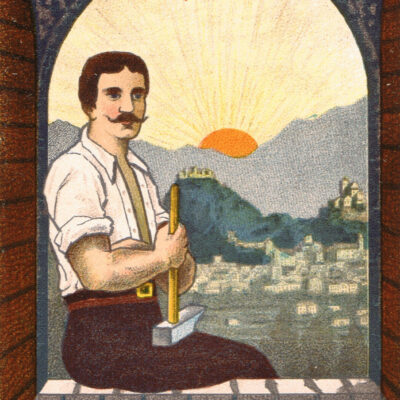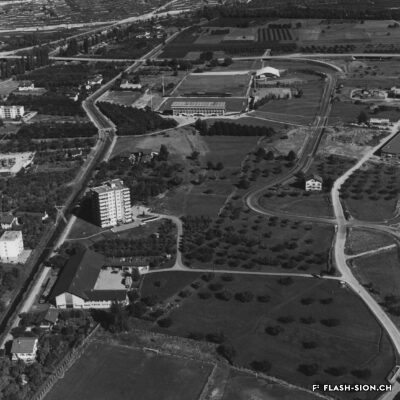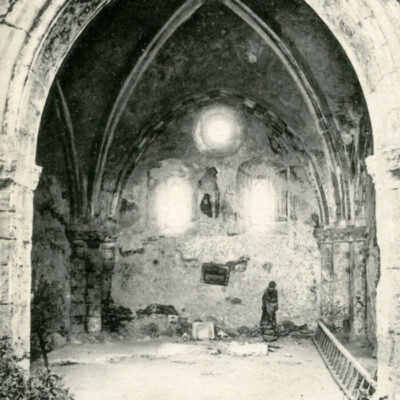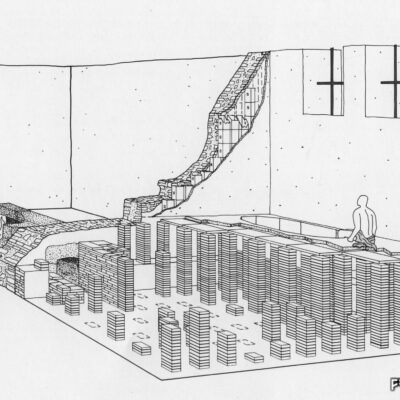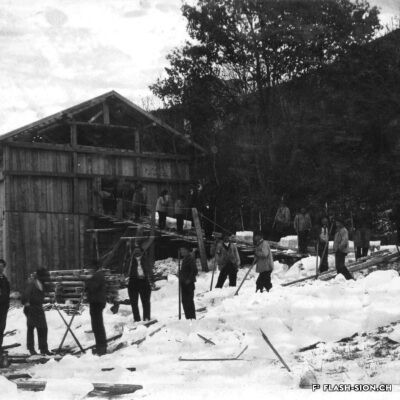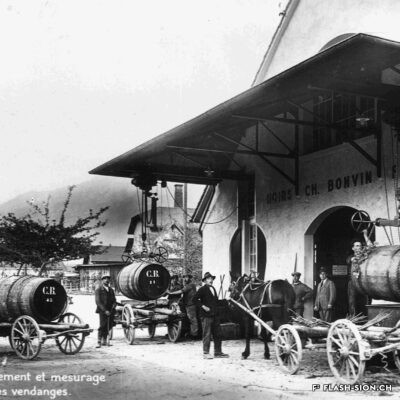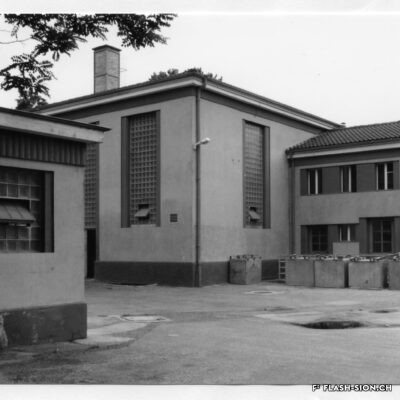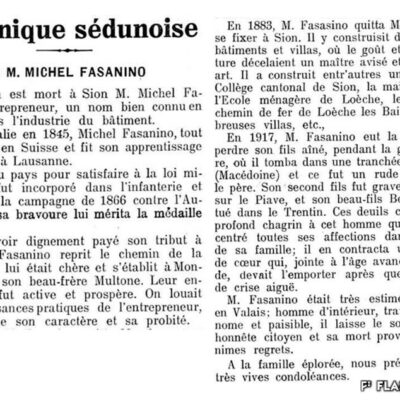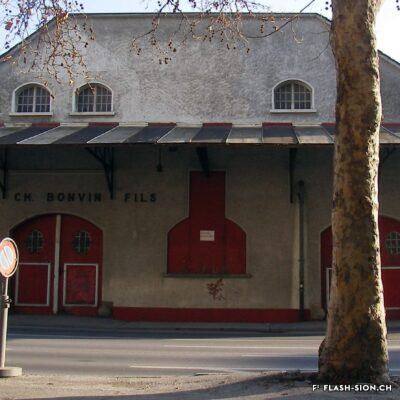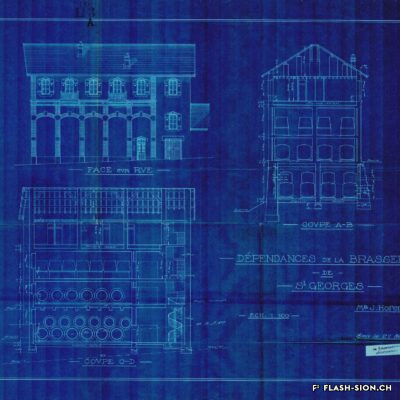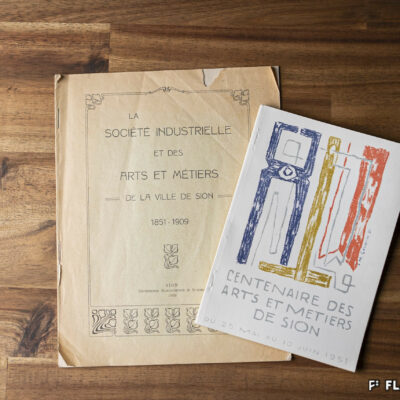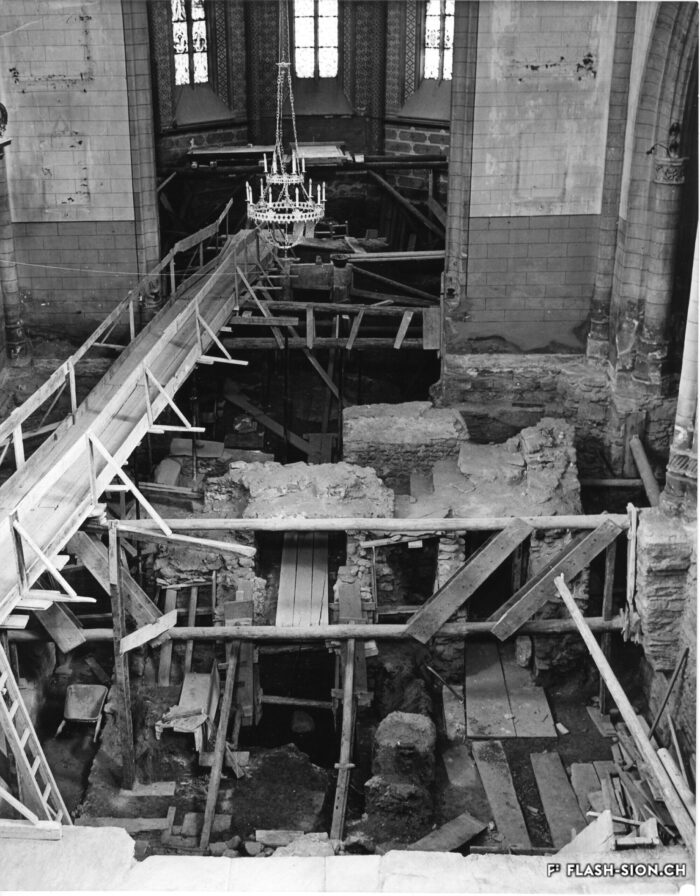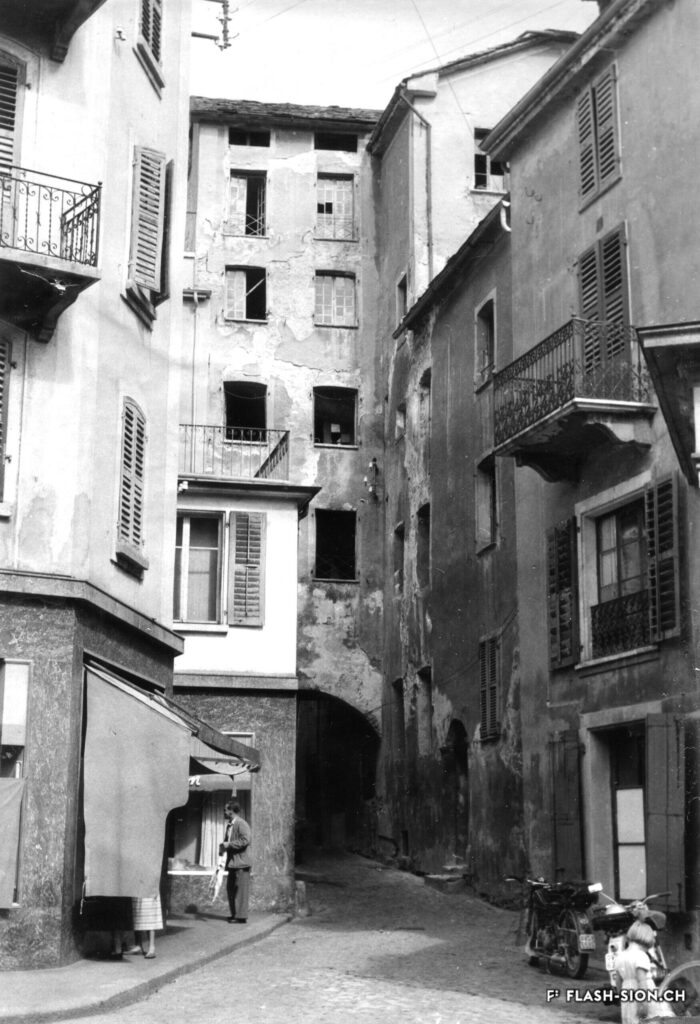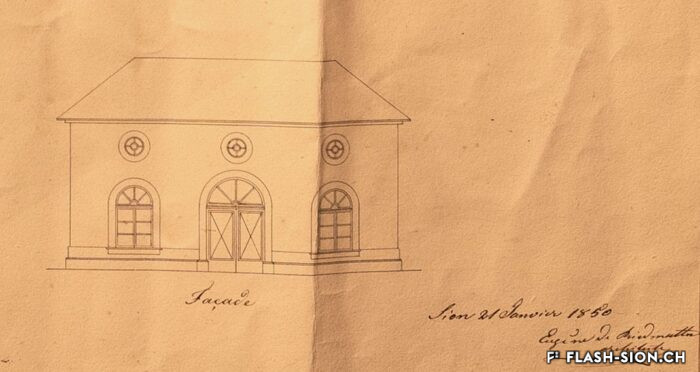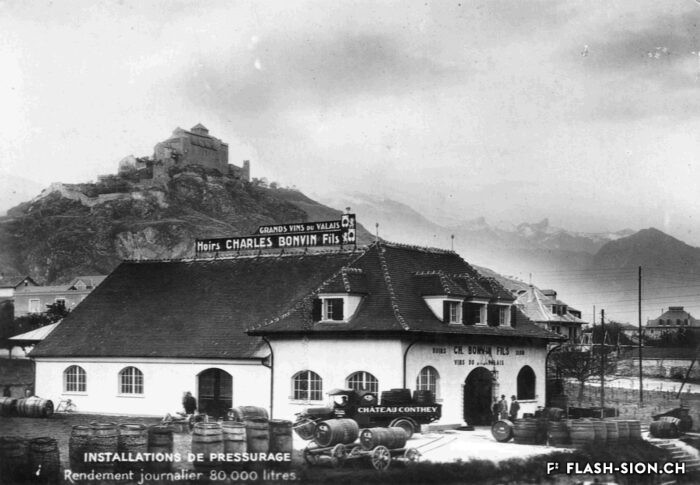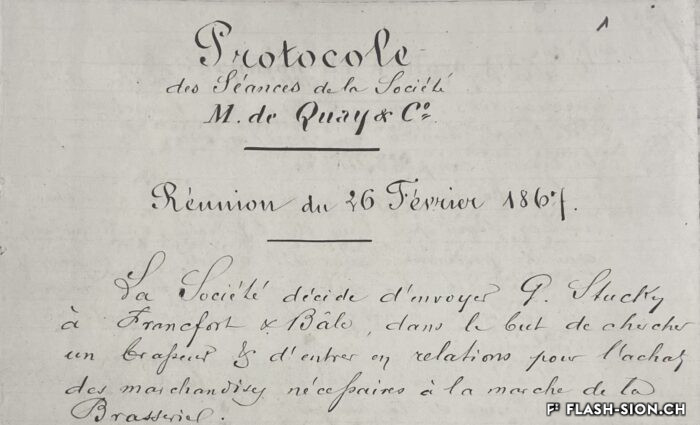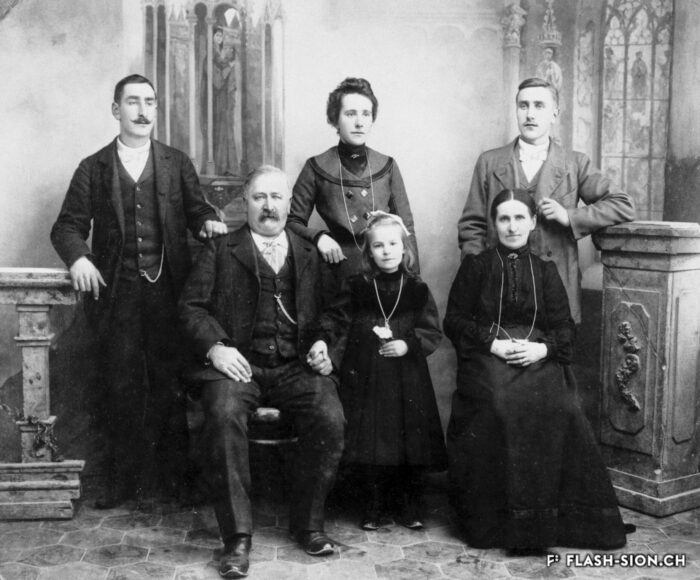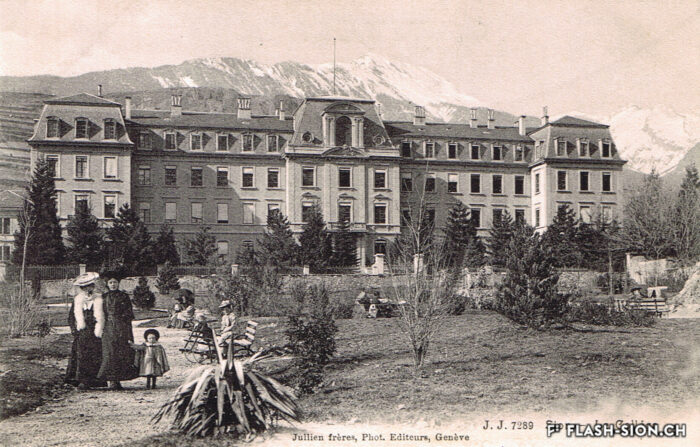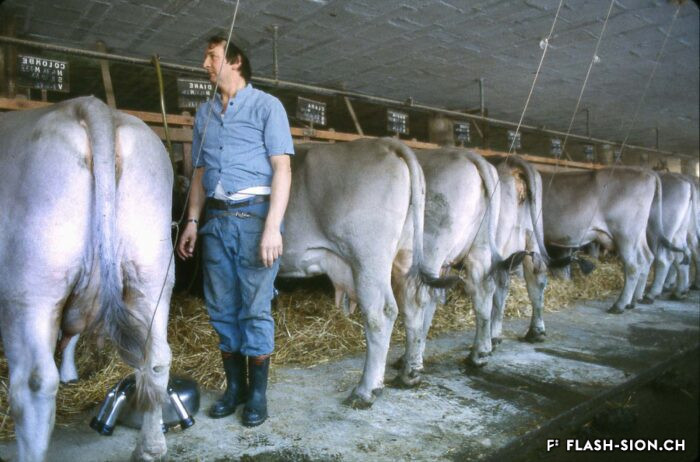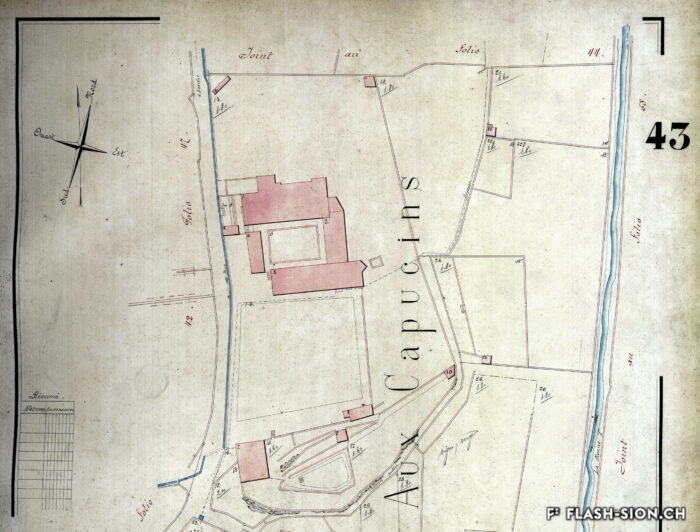Du culte du corps aux lieux de culte
Les fouilles archéologiques de St-Théodule au début des années 1960 révèlent une surprise de taille ! Sous l’église gothique actuelle, œuvre de reconstruction inachevée de l’illustre maître-maçon transalpin Ulrich Ruffiner, les archéologues découvrent non seulement les ruines de trois édifices religieux antérieurs, mais également les vestiges de thermes romains. Infrastructure balnéaire caractéristique de la vie sociale de la Rome antique, les thermes publics étaient placés à côté du forum. Ainsi, l’hypothèse de la présence d’une place publique au Glarier sous l’Empire romain est aujourd’hui avancée par les spécialistes.
Vom Köperkult zum Kultort
Die archäologischen Ausgrabungen von St.Theodul Anfang der 1960er Jahre hielten eine grosse Überraschung bereit! Unter den Mauern der bestehenden gotischen Kirche, die auf ein unvollendetes Projekt des berühmten Maurermeisters Ulrich Ruffiner zurückführt, entdeckten Archäologen nicht nur die Ruinen von drei früheren Sakralbauten, sondern auch Überreste einer römischen Therme. Die für das gesellschaftliche Leben im alten Rom charakteristische Badeinfrastruktur befand sich gewöhnlich neben dem Forum. So vertreten Wissenschaftler heute die Hypothese, dass während des römischen Reichs das Zentrum der Siedlung in Glarier gelegen haben könnte.
Cleanliness is next to godliness
The archaeological excavations at the church of St. Theodulus in the early 1960s uncovered a major surprise! Beneath the present-day Gothic church (an unfinished reconstruction by the renowned Italian master mason Ulrich Ruffiner), the archaeologists discovered not only the ruins of three earlier religious buildings, but also the remains of Roman baths. The public baths were a typical feature of social life in ancient Rome, and they were usually located beside the forum. This discovery has now prompted experts to suggest that there was a public square in Sion’s Glarier district under the Roman Empire.
Dal culto del corpo ai luoghi di culto
Gli scavi archeologici presso St-Théodule, all’inizio degli anni 60, svelano una sorpresa notevole! Sotto la chiesa gotica attuale, opera di ricostruzione incompiuta dell’illustre capomastro transalpino Ulrich Ruffiner, gli archeologi scoprono non solamente le rovine di tre edifici religiosi antecedenti ma anche vestigi di terme romane. Infrastruttura balneare caratteristica della vita sociale della Roma antica, le terme pubbliche erano collocate accanto al foro. Pertanto, oggi gli specialisti avanzano l’ipotesi della presenza di una piazza pubblica al Glarier sotto l’Impero Romano.
Un évêque valdôtain
Boniface de Challant, évêque de Sion de 1290 à 1308, est originaire de l’une des familles les plus puissantes du Val d’Aoste. Sachant manier avec énergie et fermeté la crosse et l’épée, il commandite la construction du château de Tourbillon, érigé au tournant du 13e siècle. Il s’inscrit ainsi dans la tradition familiale de « bâtisseurs de châteaux-forts », les Challant ayant déjà fait édifier de nombreuses forteresses dans leur vallée d’origine.
Ein Bischof aus dem Aostatal
Der zwischen 1290 und 1308 als Bischof von Sitten amtierende Bonifaz de Challant stammte aus einer der einflussreichsten Familien des Aostatals. Er handhabte Bischofsstab wie Schwert mit Tatkraft und Entschlossenheit und blieb der Familientradition der “Burgenbauer” treu. Gelten doch die Challants als Auftraggeber zahlreicher Festungen in ihrer Heimatregion. Der Bau der Burganlage von Tourbillon, die um die Wende des 13. Jahrhunderts entstanden ist, wird allgemein Bonifaz de Challant zugeschrieben.
A bishop from Val d’Aosta
Boniface de Challant, Bishop of Sion from 1290 to 1308, came from one of the most powerful families in Val d’Aosta. As a vigorous and resolute wielder of the crook and the sword, he sponsored the construction of Tourbillon Castle, built at the turn of the 13th century. In so doing, he followed the family tradition of “builders of fortified castles”: the Challant family had already commissioned many fortresses in their home valley.
Un vescovo valdostano
Bonifacio di Challant, vescovo di Sion dal 1290 al 1308, proviene da una delle famiglie più potenti della Valle d’Aosta. Sapendo maneggiare con forza e fermezza il pastorale e la spada, commissiona la costruzione del castello di Tourbillon, eretto al volgere del 13° secolo. S’iscrive così a pieno titolo nella tradizione familiare dei “costruttori di fortezze”, visto che gli Challant avevano già fatto edificare numerose fortezze nella loro valle d’origine.
De Jean-Baptiste à Marguerite
Jean-Baptiste Garbaccia ou Garbazzia (1790-1865) s’établit à Sion en tant que maître-maçon au début du 19e siècle. Piémontais originaire de Varallo, il fait de nombreux dons aux pauvres de la cité ainsi qu’aux établissements de charité. Cet homme généreux lègue également à la Municipalité divers bâtiments, dont l’imposante maison en bas de la ruelle qui porte aujourd’hui son nom. Démolie en 1954, cette bâtisse, un temps mise à la disposition des assistés, a laissé place à un espace baptisé en hommage à l’artiste et écrivaine Marguerite Burnat-Provins.
Von Jean-Baptiste zu Marguerite
Der Maurermeister Jean-Baptiste Garbaccia oder Garbazzia (1790-1865) siedelte sich Anfang des 19. Jahrhunderts in Sitten an. Der gebürtige Piemonteser aus Varallo zeichnete sich durch zahlreiche Spenden zu Gunsten von Mittellosen und Wohltätigkeitseinrichtungen der Stadt aus. Der grosszügige Bürger hinterliess der Gemeinde verschiedene Immobilien, darunter das imposante Haus in der Gasse, die heute seinen Namen trägt. Dieses diente einige Zeit als Unterkunft für Unterstützungsbedürftige der Stadt. Es wurde 1954 abgerissen und wich so einem Platz zu Ehren der Schriftstellerin Marguerite Burnat-Provins.
From Jean-Baptiste to Marguerite
Jean-Baptiste Garbaccia or Garbazzia (1790-1865) set up his business as a master mason in Sion at the start of the 19th century. This native of Varallo in Piedmont bestowed many gifts on the city’s poor and its charitable institutions. He also showed his generosity by bequeathing various buildings to the Municipality, including the impressive house at the bottom of the street that now bears his name. This building was placed at the disposal of people in need of social assistance before it was demolished in 1954; it made way for a space named in honour of Marguerite Burnat-Provins, the artist and writer.
Da Giovanni Battista a Marguerite
Giovanni Battista Garbaccia o Garbazzia (1790-1865) si stabilisce a Sion come capomastro all’inizio del 19° secolo. Piemontese, originario di Varallo, fa numerosi doni ai poveri della città così come ad enti di beneficenza. Uomo generoso fa dono al comune anche di diversi edifici, tra i quali l’imponente casa all’inizio del vicolo a lui intestato. Il palazzetto, distrutto nel 1954 e un tempo a disposizione degli assistiti, ha lasciato il posto ad un luogo che ha preso il nome dell’artista e scrittrice Marguerite Burnat-Provins.
D’un abattoir à l’autre
En 1850, des abattoirs municipaux sont construits sous le rocher de la Majorie, dans un quartier encore peu habité à l’époque. Avec l’augmentation de la population, ces locaux ne répondent plus aux normes d’hygiène dès le début du 20e siècle. Les discussions pour un nouveau bâtiment commencent. Durant les années 1930, les abattoirs déménagent à la rue de l’Industrie, lieu plus approprié. Ils y resteront près de 70 ans avant de devoir fermer, n’étant plus assez rentables. L’édifice est ensuite investi par l’Œuvre suisse d’entraide ouvrière (OSEO), le Service des sports, de la jeunesse et des loisirs ainsi que certaines sociétés locales. Le départ de l’OSEO, début 2021, offre à la Ville la possibilité d’en faire un lieu dédié à la créativité et à l’innovation au cœur du quartier Ronquoz 21.
Von einem Schlachthof zum andern
1850 wird am Fusse des Majoria-Felsens in einem damals noch kaum bebauten Quartier ein erster städtischer Schlachthof errichtet. Dieser entspricht aufgrund des grossen Bevölkerungszuwachses bereits ab anfangs des 20. Jahrhunderts nicht mehr den Hygienenormen. Es folgen längere Verhandlungen, um einen neuen und geeigneteren Standort zu finden. In den 1930er Jahren siedelt der Schlachthof an die Rue de l’Industrie über, wird während 70 Jahren betrieben und dann aufgrund ungenügender Rentabilität geschlossen. Das Gebäude wird darauf von dem Schweizerischen Arbeitshilfswerk (SAH), dem städtischen Amt für Sport, Jugend und Freizeit wie auch lokalen Vereinen genutzt. Der Auszug des SAH eröffnet der Stadt schliesslich die Chance, mitten im Quartier von Ronquoz 21 einen Ort für Kreativität und Innovation anzusiedeln.
From one slaughterhouse to another
In 1850, municipal slaughterhouses were built under the Majorie rock, in a neighbourhood that was not very populated at the time. With the increase in population at the beginning of the 20th century, these premises no longer met hygiene standards. Discussions about a new building began. During the 1930s, the slaughterhouses moved to the ‘Rue de l’Industrie’, a more suitable location. They remained there for almost 70 years before being forced to close as they were no longer profitable. The building was then taken over by the Swiss Labour Assistance (OSEO, Œuvre suisse d’entraide ouvrière), the Sports, Youth and Leisure Service (Service des sports, de la jeunesse et des loisirs) and some local societies. The departure of the OSEO, at the beginning of 2021, offered the city the possibility of turning it into a venue dedicated to creativity and innovation in the heart of the Ronquoz 21 district.
Da un macello all’altro
Nel 1850 furono costruiti dei macelli comunali sotto la roccia di Majorie, in un quartiere che all’epoca era poco popolato. Con l’aumento della popolazione, all’inizio del XX secolo questi locali non soddisfacevano più gli standard igienici. Sono così iniziate le discussioni per la costruzione di un nuovo edificio. Negli anni ’30 i macelli si trasferirono nella Rue de l’Industrie, in una posizione più adatta. L’azienda rimase lì per quasi 70 anni prima di essere costretta a chiudere non essendo più abbastanza redditizia. L’edificio è stato poi preso in gestione dall’OSEO (Soccorso Operaio Svizzero,SOS), il Service des sports, de la jeunesse et des loisirs (Servizio dello sport, della gioventù e del tempo libero) e da alcune società locali. La partenza del OSEO, all’inizio del 2021, offre alla Città la possibilità di trasformarlo in un luogo dedicato alla creatività e all’innovazione nel cuore del distretto Ronquoz 21.
Charles et les caves festives
Fondée en 1858, la maison sédunoise des Hoirs Charles Bonvin Fils fait figure de pionnière en matière de commerce vinicole en Valais. Charles-Marie Bonvin, son fondateur, donne l’impulsion au domaine et fait connaître les vins valaisans hors du canton et de la Suisse. Son fils Charles (1858-1922) prend la relève et à sa suite, ses deux fils, Charles (1888-1937) puis Félix. Aux caves et bureaux de la rue des Vergers et de la rue des Remparts s’ajoutent en 1932, les pressoirs de l’avenue de Tourbillon, face à la gare. Ces derniers deviennent alors un centre moderne de pressurage et d’encavage, jusqu’au début des années 1990. Désaffectés pendant de nombreuses années, ces pressoirs à l’abandon attirent l’attention d’un collectif qui y voit un potentiel culturel et souhaite leur redonner vie de façon éphémère. En 2008 et durant une année, l’association « Les Caves à Charles » fait vibrer ce lieu industriel chargé d’histoire, pour lui rendre un dernier hommage avant sa démolition.
Charles und die festliche Kellerei
Die 1858 in Sitten gegründete Weinkellerei der Erben von Charles Bonvin und Söhne gilt als Pionierin des Weinhandels im Wallis. Charles-Marie Bonvin, Begründer des Hauses, verstand es, den Walliser Wein ausserhalb des Kantons und der Schweiz bekannt zu machen. Der Betrieb wird in der Folge von seinem Sohn Charles (1858-1922) übernommen bevor dessen Söhne Charles (1888-1937) und später Félix die Nachfolge antreten. Zum Weinkeller und den Büroräumlichkeiten in der Rue des Vergers und der Rue des Remparts gesellt sich 1932 das Gebäude mit Weinpresse an der Avenue de Tourbillon, direkt gegenüber dem Bahnhof. Dieses entwickelt sich bis anfangs der 1990er Jahre zu einer modernen Kelterei mit Weinkeller. Danach bleibt das Gebäude während einiger Jahre ungenutzt. 2008 interessiert sich ein Kollektiv für die Kelterei und sieht deren Potenzial für eine kurzfristige kulturelle Nutzung. Während einem Jahr bringt der Verein «Les Caves à Charles» den geschichtsträchtigen Ort nochmals zum Schwingen und erweist ihm, bevor er abgebrochen wird, die letzte Ehre.
Charles and the festive wine cellars
Founded in 1858, the Sion-based company of Hoirs Charles Bonvin Fils is a pioneer in the wine trade in Valais. Charles-Marie Bonvin, its founder, provided the impetus to the estate and made Valais wines known outside the canton and Switzerland. His son Charles (1858-1922) took over and was followed by his two sons, Charles (1888-1937) and Félix. In 1932, the cellars and offices in the ‘Rue des Vergers’ and the ‘Rue des Remparts’ were completed by the addition of wine presses in the ‘Avenue de Tourbillon’, opposite the railway station. They became a modern pressing and cellaring centre until the early 1990s. Disused for many years, these abandoned wine presses attracted the attention of a group who saw a cultural potential in them and wanted to bring them back to life in a temporary way. In 2008 and for one year, the Charles Cellars Association (Les Caves à Charles) filled this industrial site, full of history, with life and paid it a last tribute before its demolition.
Charles e le cantine in festa
Fondata nel 1858, l’azienda sedunese Hoirs Charles Bonvin Fils, è una pioniera del commercio di vino nel Vallese. Charles-Marie Bonvin, il suo fondatore, diede impulso alla tenuta e fece conoscere i vini del Vallese al di fuori del cantone e della Svizzera. Il figlio Charles (1858-1922) prese il testimone e fu seguito dai suoi due figli, Charles (1888-1937) e Félix. Nel 1932, alle cantine e agli uffici nella Rue des Vergers e nella Rue des Remparts si aggiunsero i torchi di Avenue de Tourbillon, di fronte alla stazione. In seguito, fino all’inizio degli anni Novanta, si sono trasformati in un moderno centro di pressatura e cantina. In disuso da molti anni, questi torchi abbandonati hanno attirato l’attenzione di un gruppo che ha visto in essi un potenziale culturale e ha voluto riportarli in vita in modo temporaneo. Nel 2008 e per un anno, l’associazione “Les Caves à Charles” (Le cantine di Charles) ha riportato in vita questo luogo industriale ricco di storia, per rendergli un ultimo omaggio prima della sua demolizione.
De la bière au pays du vin
Il aura fallu du temps pour que la bière s’impose en Valais, pays du vin par excellence. Malgré l’interdiction de ce « breuvage inhabituel » en 1802 par les autorités valaisannes, plusieurs brasseries s’installent dans la région sédunoise au cours du 19e siècle. En 1865, Maurice de Quay, pharmacien hollandais, en ouvre une au nord de la ville de Sion. A la même période environ, la brasserie Koebel, Aymon et Cie est également active à Bramois. Pour produire une bière de qualité, les deux entreprises recrutent leurs employés en Suisse allemande, voire en Allemagne. Vers la fin du 19e siècle, la brasserie de Quay est reprise par Johan Hofer et celle de Bramois passe aux mains des frères Fertig. En 1926, elles fusionnent pour devenir la Brasserie Valaisanne telle qu’on la connait aujourd’hui. Dès 1950, l’entreprise s’industrialise avec, notamment, des installations frigorifiques qui remplacent la glacière.
Vom Bier zum Weinland
Es ging eine ganze Weile, bis sich das Bier in dem vom Weinbau geprägten Wallis durchsetzt. Obwohl die Walliser Behörden das «ungewohnte Gebräu» verbieten, siedeln sich im Laufe des 19. Jahrhunderts mehrere Bierbrauereien in der Region Sitten an. 1865 eröffnet der holländische Apotheker Maurice de Quay im Norden der Stadt Sitten eine Brauerei. Etwa zur gleichen Zeit wird bei Koebel, Aymon et Cie in Bramois ebenfalls Bier gebraut. Zur Herstellung eines hochwertigen Bieres, heuern beide Unternehmen ihre Mitarbeiter in der Deutschschweiz oder gar in Deutschland an. Ende des 19. Jahrhunderts wird die Brauerei de Quay von Johan Hofer übernommen und die Brauerei in Bramois geht in den Besitz der Gebrüder Fertig über. 1926 fusionieren die beiden Unternehmen unter dem Namen Walliser Brauerei, welche bis heute noch besteht. Ab den 1950er Jahren wird die Produktion unter anderem durch die Installation von Kühlanlagen industrialisiert, die den Eiskeller ersetzen.
Beer in wine country
It took a long time for brewing beer to become established in Valais, a wine country par excellence. Despite the ban on this “unusual beverage” in 1802 by the Valais authorities, several breweries were set up in the Sion region during the 19th century. In 1865, Maurice de Quay, a Dutch pharmacist, opened one in the northern part of the city of Sion. Around the same time, the brewery Koebel, Aymon & Cie was also active in Bramois. In order to produce quality beer, both companies recruited their employees in German-speaking Switzerland, and even in Germany. Towards the end of the 19th century, the Quay brewery was taken over by Johan Hofer and the Bramois brewery was taken over by the Fertig brothers. In 1926, they merged to become the Brasserie Valaisanne as we know it today. From 1950 onwards, the company became more industrial, with refrigeration facilities replacing the icebox.
La birra nel paese del vino
Ci è voluto molto tempo affinché la birra si affermasse in Vallese, la terra del vino per eccellenza. Nonostante il divieto di questa “bevanda insolita” nel 1802 da parte delle autorità vallesane, nel corso del XIX secolo nella regione sedunese sono state aperte diverse birrerie. Nel 1865, Maurice de Quay, un farmacista olandese, aprì una fabbrica di birra a nord della città di Sion.
All’incirca nello stesso periodo, anche la birreria Koebel, Aymon et Cie era attiva a Bramois. Per produrre birra di qualità, entrambe le aziende reclutarono i propri dipendenti dalla Svizzera tedesca e persino dalla Germania. Verso la fine del XIX secolo, il birrificio Quay fu rilevato da Johan Hofer e il birrificio di Bramois dai fratelli Fertig. Nel 1926 si fusero per diventare la Brasserie Valaisanne come la conosciamo oggi. Dal 1950 in poi, l’azienda divenne più industriale, con impianti di refrigerazione che sostituirono la ghiacciaia.
Une affaire de famille
Entrepreneur piémontais né en 1845, Michel Fasanino œuvre à Sion dès son établissement en 1883. A cette époque, la ville ressemble davantage à un bourg agricole qu’à une cité urbaine. Jusqu’à son décès en 1923, Fasanino contribue notablement à son expansion. Il collabore également avec les deux architectes incontournables de l’époque, Joseph de Kalbermatten et Joseph Dufour. Ce patron bienveillant dirige son affaire prospère en bon père de famille et laisse de nombreuses réalisations, en partie disparues aujourd’hui.
Ein Familienunternehmen
Der 1845 geborene piemontesische Baumeister Michel Fasanino liess sich im Jahre 1883 in Sitten nieder. In der noch stark bäuerlich geprägten Stadt trug Fasanino bis zu seinem Tod im Jahre 1923 massgeblich zur Stadtentwicklung bei. Er arbeitete ebenfalls mit Joseph de Kalbermatten und Joseph Dufour zusammen. Diese gehörten zu den führenden Architekten jener Zeit. Der wohlwollende Arbeitgeber führte ein florierendes Geschäft und hinterliess ein umfassendes Lebenswerk, von dem heute zahlreiche Bauten abgebrochen worden sind.
A family business
Michel Fasanino, a Piedmont entrepreneur born in 1845, worked at Sion after setting up business there in 1883. In those days, Sion resembled an agricultural township rather than an urban centre. Fasanino played an outstanding part in the city’s expansion until his death in 1923. He also collaborated with the two most prominent architects of the period: Joseph de Kalbermatten and Joseph Dufour. This benevolent employer ran his prosperous business like a good family man. His legacy included many buildings, although some of them have since disappeared.
Un affare di famiglia
Imprenditore piemontese nato nel 1845, Michel Fasanino lavora a Sion sin dal suo insediamento nel 1883. A quell’epoca, la città assomiglia maggiormente ad un borgo agricolo che ad una città urbana. Fino alla sua morte nel 1923, Fasanino contribuisce in modo notevole all’espansione della città. Collabora con due architetti di spicco dell’epoca, Joseph de Kalbermatten e Joseph Dufour. Capo benevolo dirige la sua attività prospera come un buon padre di famiglia e lascia innumerevoli opere, ad oggi in parte distrutte.
Sion gravée dans la pierre
Important les compétences nécessaires au travail de la pierre, des marbriers et sculpteurs originaires du Val d’Ossola dominent le secteur dès la fin du 19e siècle et contribuent largement à l’essor de la ville du 20e siècle. En 1906, les frères Nichini déploient leur activité à Sion et marquent durant trois générations la construction en pierre de la cité. Exploitant d’une carrière à Bramois, Albert Nichini, devient par la suite propriétaire de la carrière d’Evolène, dont les pierres ornent de nombreux bâtiments et monuments de la ville.
Sion, in Stein gemeisselt
Ab Ende des 19. Jahrhunderts dominieren die für ihre Fachkenntnis bekannten Steinhauer und Steinmetze aus dem Val d’Ossola den Berufszweig der Steinbearbeitung und tragen massgeblich zur Stadtentwicklung im 20. Jahrhundert bei. Die Gebrüder Nichini nehmen im Jahr 1906 ihre Tätigkeit in Sitten auf und prägen über drei Generationen den Steinbau der Stadt. Vorerst Betreiber eines Steinbruchs in Bramois, erwirbt Albert Nichini später den Steinbruch von Evolène, dessen Steinplatten zahlreiche Gebäude und Denkmäler der Stadt schmücken.
Sion – carved in stone
Marble masons and sculptors from Val d’Ossola brought with them the skills needed to work with stone; they dominated the industry from the late 19th century onwards and played a key part in the city’s dynamic growth in the 20th century. The Nichini brothers set up their business at Sion in 1906 and for three generations, they left their mark on the city’s stone architecture. Albert Nichini operated a quarry at Bramois and then became the owner of the Evolène quarry, which supplied stone to decorate many of the city’s buildings and monuments.
Sion incisa nella pietra
Ritenute importanti le competenze necessarie al lavoro della pietra, marmisti e scultori originari della Val d’Ossola dominano il settore dalla fine del 19° secolo e contribuiscono notevolmente all’espansione della città del 20° secolo. Nel 1906, i fratelli Nichini sviluppano la loro attività a Sion e segnano per tre generazioni il settore della costruzione in pietra della città. Esercente di una cava a Bramois, Albert Nichini diventa in seguito il proprietario della cava di Evolène, le cui pietre abbelliscono numerosi edifici e monumenti della città.
La construction dans les gènes
Depuis l’Antiquité, bâtisseurs, maître-maçons et entrepreneurs italiens marquent la construction en pierre de la cité sédunoise et du Valais. Reconnus pour leur savoir-faire artisanal et leur force de travail exemplaires, des entrepreneurs italiens feront également partie, en 1919, des membres fondateurs de l’Association Valaisanne des Entrepreneurs. Si ces « étrangers » seront perçus comme une menace lors des grandes crises économiques du 20e siècle, le secteur de la construction compte aujourd’hui encore de nombreux entrepreneurs d’origine transalpine.
Das Bauwesen im Blut
Seit der Antike prägen italienische Baumeister, Maurermeister und Unternehmer die Steinbauweise der Stadt Sitten und des Wallis. Bekannt für ihr handwerkliches Können und ihre unermüdliche Arbeitskraft, gehören 1919 ebenfalls italienische Baumeister zu den Gründungsmitgliedern des Walliser Baumeisterverbandes. Zwar werden diese “Fremdarbeiter” während den grossen Wirtschaftskrisen des 20. Jahrhunderts als Bedrohung wahrgenommen, doch prägen noch heute zahlreiche italienischstämmige Unternehmer den Bausektor.
Building is in their genes
Since ancient times, Italian builders, master masons and contractors have left their mark on the stone architecture that typifies the city of Sion and Valais canton. Italian contractors were renowned for their craftsmanship and their outstanding labour force; in 1919, they were also among the founding members of the Valais Association of Building Contractors. These “foreigners” were viewed as a threat during the major economic crises of the 20th century, but today’s construction sector still includes many contractors who trace their origins to the southern side of the Alps.
L’edilizia nei geni
Dall’antichità, costruttori, capimastri e imprenditori italiani segnano il settore della costruzione in pietra della città di Sion e del Vallese. Riconosciuti per il loro know-how, le loro competenze nell’artigianato e la loro forza lavoro esemplari, gli imprenditori italiani faranno parte nel 1919 dei membri fondatori dell’Associazione vallesana degli Imprenditori. Se questi “stranieri” sono considerati come una minaccia durante le grandi crisi economiche del 20° secolo, il settore dell’edilizia conta ancora oggi numerosi imprenditori di origine transalpina.
Un moulin à la pointe
Après une tentative infructueuse à l’aube du 20e siècle, les Minoteries de Plainpalais (Genève) ouvrent une succursale à Sion en 1919. Le Moulin de Sion, entreprise d’importance pour le développement économique du Valais, s’agrandit rapidement. Les premiers silos en béton armé sont construits en 1925. Un peu moins de 15 ans plus tard, il faut en édifier d’autres. Le complexe continue de s’étendre jusqu’en 1980. Au fil du temps, les techniques évoluent et, dès 1984, les opérations sont entièrement automatisées. Le Moulin de Sion est alors un des plus modernes d’Europe ! Suite à l’obtention du label AOC pour le pain de seigle – premier pain d’Europe à le recevoir –, le Moulin de Sion se consacre entièrement à la fabrication de la farine de seigle. En 2015, la production est déplacée à Naters et le bâtiment peut alors être totalement réaffecté. Tout en conservant son apparence extérieure, les lieux accueillent désormais restaurants, fitness, bureaux et appartements notamment.
Modernste Mühlentechnik
Nach einem erfolglosen Niederlassungsversuch zu Beginn des 20. Jahrhunderts eröffnen die Minoteries de Plainpalais (Genf) schliesslich 1919 eine Zweigstelle in Sitten. Die Mühle von Sitten nimmt in der wirtschaftlichen Entwicklung des Wallis eine wichtige Stellung ein und wird schon nach kurzer Zeit ausgebaut. 1925 entstehen die ersten Silos aus Stahlbeton. Nur knapp 15 Jahre später, werden weitere Silos erstellt. Bis 1980 wird der Mühlenkomplex kontinuierlich erweitert und die Mühlentechnik modernisiert. Ab 1984 wird der Betrieb schliesslich vollständig automatisiert. Die Mühle Sitten zählt zu dieser Zeit zu einem der modernsten Betriebe Europas! Nach dem Eintrag des Walliser Roggenbrotes ins Register der Ursprungsbezeichnung (GUB) – das erste Brot in Europa mit dieser Bezeichnung – widmet sich die Mühle Sitten ganz der Herstellung von Roggenmehl. 2015 wird die Produktion nach Naters verlegt und die Industriebrache wird vollständig umgenutzt. Das äussere Erscheinungsbild der Mühle bleibt erhalten, der Gebäudekomplex beherbergt jedoch neu verschiedene Restaurants, ein Fitnesscenter, Büroräumlichkeiten und moderne Wohnungen.
A mill at the forefront
After an unsuccessful attempt at the beginning of the 20th century, the Minoteries de Plainpalais (Geneva) opened a branch in Sion in 1919. The Moulin de Sion (Mill of Sion), an important company for the economic development of Valais, expanded rapidly. The first reinforced concrete silos were built in 1925. A little less than 15 years later, others had to be built. The complex continued to expand until 1980. Over time, technologies evolved and, in 1984, operations were fully automated. The Moulin de Sion became one of the most modern in Europe! After obtaining the AOC (PDO) label for rye bread – the first bread in Europe to receive it – the Moulin de Sion devoted itself entirely to the production of rye flour. In 2015, production was moved to Naters and the building’s function was completely reassigned. While retaining its external appearance, the premises now house restaurants, fitness centres, offices and flats, among other things.
Un mulino all’avanguardia
Dopo un tentativo fallito all’inizio del XX secolo, i mulini di Plainpalais (Ginevra) aprirono una filiale a Sion nel 1919. Il Moulin de Sion, un’azienda importante per lo sviluppo economico del Vallese, si espanse rapidamente. I primi silos in cemento armato furono costruiti nel 1925. Poco meno di 15 anni dopo, è stato necessario costruirne altri. Il complesso continuò ad espandersi fino al 1980. Nel corso del tempo, le tecniche si sono evolute e, a partire dal 1984, le operazioni sono state completamente automatizzate. Il Moulin de Sion è diventato così uno dei più moderni d’Europa! Dopo aver ottenuto il marchio AOC per il pane di segale – il primo pane in Europa a riceverlo – il Moulin de Sion si è dedicato interamente alla produzione di farina di segale. Nel 2015 la produzione si è spostata a Naters e l’edificio ha potuto essere completamente riutilizzato. Pur mantenendo il suo aspetto esterno, i locali ospitano oggi, tra l’altro, ristoranti, centri fitness, uffici e appartamenti.
De la ferme au centre culturel
La Ferme-Asile n’a pas toujours été le centre polyvalent dédié à l’art contemporain qu’il est aujourd’hui. Autrefois ferme de l’Hôpital-Asile, l’exploitation approvisionnait l’hôpital de Sion de 1955 à 1984. Laissé à l’abandon en pleine zone urbaine durant une dizaine d’années, ce témoin unique de l’activité agricole sédunoise des années 1950 suscite l’intérêt d’un groupe d’artistes, qui y voit l’opportunité de créer un lieu pluridisciplinaire vecteur de synergies culturelles. Ce centre artistique, nommé tout d’abord « Centre Culturel LézArt » voit le jour et se développe grâce à l’investissement d’artistes et de bénévoles. Depuis 1996, la bâtisse transformée abrite des ateliers d’artistes et un restaurant. Des expositions temporaires y sont régulièrement organisées. Au gré des financements et des agrandissements, l’établissement ouvre salle de concert, nouveaux espaces et ateliers supplémentaires. La rénovation de 2009 permet enfin l’utilisation sur toute l’année de la grange à la charpente impressionnante.
Vom Bauernhof zum Kulturzentrum
Heute widmet sich das vielseitige Zentrum der «Ferme-Asile» der zeitgenössischen Kunst – das war nicht immer so. Der ehemalige Bauernhof des Burgerspitals versorgte von 1955 bis 1984 das Krankenhaus von Sitten. Dieser einzigartige landwirtschaftliche Zeitzeuge der 1950er Jahre weckte das Interesse einer Gruppe von Kunstschaffenden, die hier einen multidisziplinären Ort einrichten wollten, um kulturelle Synergien zu nutzen. Das “Centre Culturel LézArt”, wie anfangs das Kulturzentrum genannt wurde, konnte nur dank grossem Engagement der beteiligten Kunstschaffenden und ehrenamtlicher Arbeit eröffnet werden. Seit 1996 beherbergen die umgebauten landwirtschaftlichen Gebäude Künstlerateliers und ein Restaurant. Es werden regelmässig Wechselausstellungen gezeigt. Durch weitere Finanzierungsmittel konnten im Laufe der Jahre ein Konzertsaal, neue Räumlichkeiten und zusätzliche Ateliers eröffnet werden. Die Renovation von 2009 ermöglicht nun die ganzjährige Nutzung der Scheune mit ihrem imposanten Dachstuhl.
From being a farm to becoming a cultural centre
The Ferme-Asile was not always the multi-purpose centre dedicated to contemporary art that it is today. Formerly the farm of the Hôpital-Asile, it supplied the hospital of Sion from 1955 to 1984. Left abandoned in the middle of an urban area for about ten years, this unique witness to the agricultural activity of Sion in the 1950s aroused the interest of a group of artists, who saw in it the opportunity to create a multi-disciplinary venue, a vector of cultural synergies. The artistic centre, initially named “Centre Culturel LézArt”, was born and developed thanks to the investment of artists and volunteers. Since 1996, the transformed building has housed artists’ studios and a restaurant. Temporary exhibitions are regularly held there. As funding was received and extensions were built, the establishment opened a concert hall, new rooms and additional workshops. The renovation in 2009 finally made it possible to use the barn with its impressive roof structure all year round.
Da fattoria a centro culturale
La Ferme-Asile non è sempre stata il centro polifunzionale dedicato all’arte contemporanea che è oggi. Un tempo fattoria dell’ospedale psichiatrico, ha rifornito l’ospedale di Sion dal 1955 al 1984. Abbandonata per dieci anni nel bel mezzo di un’area urbana, questa testimonianza unica dell’attività agricola sedunese negli anni Cinquanta ha suscitato l’interesse di un gruppo di artisti che hanno visto in essa l’opportunità di creare un luogo multidisciplinare, vettore di sinergie culturali. Questo centro artistico, inizialmente denominato “Centre Culturel LézArt”, è nato e si è sviluppato grazie all’investimento di artisti e volontari. Dal 1996, l’edificio trasformato ospita ateliers di artisti e un ristorante. Inoltre, vi si tengono regolarmente mostre temporanee. Grazie ai finanziamenti e agli ampliamenti, lo stabilimento ha aperto una sala concerti, nuovi spazi e ateliers. La ristrutturazione del 2009 ha finalmente consentito di utilizzare tutto l’anno il fienile con la sua imponente struttura del tetto.
Un monument d’importance (inter-)nationale
Le travail du Vénitien Mirco Ravanne ne passe pas inaperçu au couvent des Capucins. L’architecte est appelé au début des années 1960 par le père Damien qui le charge de transformer et d’agrandir l’édifice religieux. A l’avant-garde à l’époque, son intervention résolument moderne vient contraster avec les structures de la bâtisse du 17e siècle tout en les respectant. Ravanne ne néglige aucun détail que ce soit dans l’architecture ou dans le mobilier « made in Italy ». Aujourd’hui, le couvent, propriété de la Bourgeoisie, est considéré comme son œuvre architecturale majeure.
Ein Denkmal von (inter-)nationaler Bedeutung
Die Arbeit des Venezianers Mirco Ravanne sorgte für Aufruhr im Kapuzinerkloster von Sitten. Der Architekt wurde Anfang der 1960er Jahre vom Guardian Pater Damien mit der Umgestaltung und Erweiterung der Klosteranlage beauftragt. Sein avantgardistischer Eingriff steht auf den ersten Blick in starkem Kontrast mit der historischen Struktur der Anlage aus dem 17. Jahrhundert, vermag aber bei genauerem Hinschauen eindrücklich zwischen Alt und Neu zu vermitteln. Ravannes Liebe zum Detail offenbart sich sowohl in seiner Architektur als auch in der von ihm entworfenen Ausstattung “Made in Italy”. Heute gilt das im Besitz der Burgergemeinde befindliche Kapuzinerkloster als das bedeutendste Werk des Architekten.
A monument of national and international importance
Visitors to the Capuchin Monastery are bound to admire the work of the Venetian architect Mirco Ravanne. In the early 1960s, Father Damien commissioned him to transform and extend this religious building. The architect took a decidedly modern, avant-garde approach to his work, which contrasts with the 17th-century structures of the building but also shows respect for them. Ravanne paid full attention to every detail, both in the architecture and the “made in Italy” furnishings. The monastery, which now belongs to the Bourgeoisie (municipality), is regarded as his architectural masterpiece.
Un monumento d’importanza (inter-)nazionale
L’operato del Veneziano Mirco Ravanne non passa di certo inosservato al convento dei Cappuccini. L’architetto è chiamato all’inizio degli anni 60 dal padre Damien che gli affida il compito di trasformare e ampliare l’edificio religioso. All’epoca all’avanguardia, il suo intervento decisamente moderno contrasta con le strutture dell’edificio del 17° secolo pur rispettandole. Ravanne non trascura alcun dettaglio sia nell’architettura che nel mobilio “made in Italy”. Ad oggi, il convento, proprietà della Borghesia, è considerato come la sua operata architettonica maggiore.
